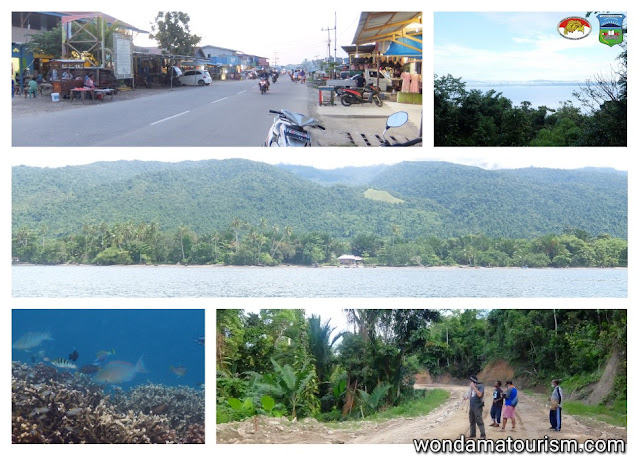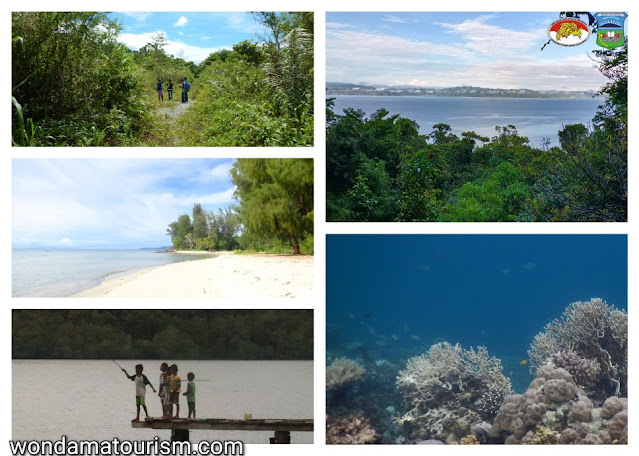Sago the Staple Food of the Indigenous People in Wondama Bay which is an important tourist destination in West Papua province of Indonesia.
The indigenous people who live in the islands and along the coastal region have got staple food locally called sagu (English: sago). Actually sago is the staple food of the Papuan people who live in lowland regions where sago palm trees grow.
 |
| How the sago starch was extracted from its pith using traditional tools |
Traditionally sago starch is extracted from the pith inside the trunk of an adult sago tree which is ready to be harvested. Usually, a family who is going to harvest sago will prepare tools such as machete, axe, bucket, filter, and hoe pounder, or sago pith chopper to rasp the sago pith.
Most of the families in Wondama regency have replaced the traditional hoe or pith chopper with grating machine.
The area around the sago tree will be cleared. The trunk will also be cleaned. After a simple prayer to praise God and ask for protection during the sago processing works, the tree is cut and felled. The trunk is cleaned from vines, spikes, and leaves. The trunk is split lengthwise. The pith can be rasped by using the traditional hoe pounder or by a grating machine.
 |
| Girls from Rumberpon island were performing traditional dance to visitors |
The rasped pith is then kneaded and washed with water where sago starch is removed from its coarse fiber. The water containing sago starch will pass through a screen and channeled to a settling container where the sago starch is collected and the excess water is removed.
Sago starch in the container made of leaves will be carried home. Some is sold in the market, and given to relatives. Some is used for family consumption. Sago starch as staple food is cooked to make papeda or baked to make bread and biscuits. Dried sago flour can be kept for longer period of time and transported to other villages and towns.
Visitors who are interested in seeing and participating in the process of the extraction of sago starch can go to Wondama regency. They can try rasping the sago pith using traditional hoe pounder and kneading the rasped pith to extract the starch as well as working in the kitchen to make papeda, and any kind of cakes made of sago flour.
 |
| Ecotourism attractions in Wondama regency (its capital is Rasiei) |
In addition to seeing the extraction of sago starch, visitors can also enjoy other ecotourism activities while traveling in Wondama regency. They can enjoy swimming, snorkeling to see the beautiful marine life or do hiking in the forest to see its unique plants and animals. Hiking and camping, birdwatching and wildlife watching along the sides of a river can also be organized.
The Indonesian Tourist Guide Association of Wondama regency
- Rio Suabey: +62 821 9869 4761
- Eky Sawaki: +62 812 4893 1154
- Amsal Tinoring: +6282197937120
Or
Department of Culture and Tourism
Wondama Bay Regency
Address:
Jalan Raya Rasiei Kompleks Perkantoran
RASIEI, TELUK WONDAMA
West Papua Province, Indonesia
E-mail: disparbudtelukwondama.info@gmail.com
If you are interested in taking an ecotour to Wondama regency, you can contact us by sending email to wondamatourism@gmail.com or by using contact form on the right side of this website.







